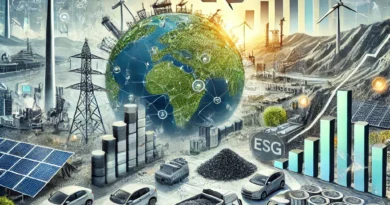Indonesia Identifies 47 Critical Mineral Deposits, Eyes Hydrogen Potential
Bandung, Indonesia – The Indonesian Geological Agency (Badan Geologi) announced on Friday, January 19, 2024, the successful identification of 47 critical and strategic mineral deposits across the country. This initiative is part of the Ministry of Energy and Mineral Resources’ (ESDM) efforts to strengthen Indonesia’s geological resources, particularly in support of the nation’s energy transition. The agency also highlighted promising surveys for natural hydrogen in Sulawesi.
The Badan Geologi collaborated with international institutions, including the Korea Institute of Geoscience, in the exploration and identification of these critical minerals. According to the Acting Head of the Badan Geologi, Muhammad Wafid, the agency’s work includes the investigation of lithium and boron, among other minerals, as key resources for clean energy technologies. “In order to support the energy transition and the development of green energy, the Geological Agency has mapped the distribution of critical and strategic minerals, reaching a total of 47 commodities. Among the critical and strategic minerals that the Geological Agency investigated are lithium and boron,” stated Wafid.
Lithium and boron investigations have shown promising results in several regions such as Bledug Kuwu, Bledug Cangkring, Jono, Crewek, Kasonga and Mamuju. The agency has recommended the first Metal Mining Business Permit (WIUP LTJ/REE) in Mamuju. Wafid added, “We have recommended the first time the Rare Earth Metal Mining Business Permit (WIUP LTJ/REE) to be proposed in Indonesia, namely in the Mamuju area. In the future, it is hoped that more recommendations will be produced to propose Rare Earth WIUP in Indonesia,”.
Boron is a critical component in hydrogen fuel cells and neodymium-iron-boron (NdFeB) magnets, as well as being a raw material for Pyrex. The demand for boron increased by 30% in 2022 and is expected to continue to rise with the increasing demand for electric vehicles (EV) and the renewable energy industry.
In addition to mineral surveys, the Badan Geologi also conducted natural hydrogen surveys in eastern Sulawesi, where geological conditions are favorable for the formation of natural hydrogen gas. The survey revealed seepages of hydrogen gas with concentrations of 20-35% in the Tanjung Api area and 9% in the Bahodopi area. The surveys also found significant concentrations of abiogenic methane and nitrogen. Although the economic viability of these findings has not yet been determined, Wafid acknowledged the evidence of natural hydrogen systems in Indonesia. Further studies are needed to understand the generation, migration, and trapping mechanisms of natural hydrogen.

